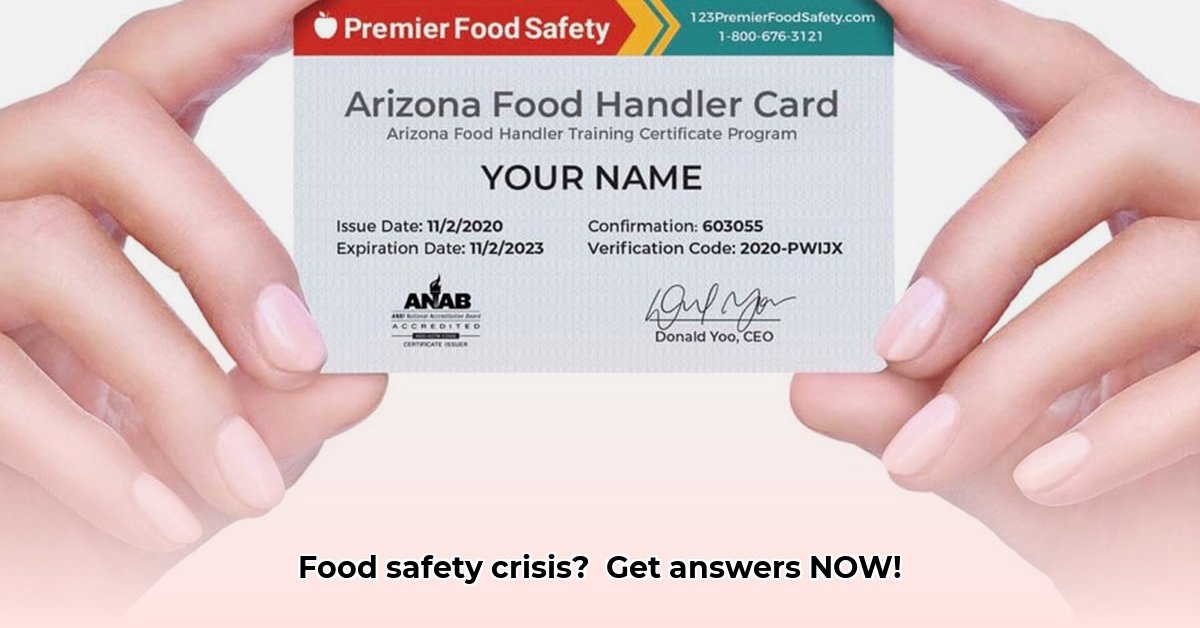
Premier Food Safety Answers: Mastering Kitchen Safety
Food safety can feel like navigating a minefield, but with the right knowledge, it becomes manageable. This guide provides clear, actionable steps to ensure food safety compliance, protect your customers, and maintain a thriving business. We'll address critical areas, translating complex regulations into easy-to-understand practices. Don't let food safety anxieties hold you back – let's make it simple.
Understanding Foodborne Illnesses: The Microscopic Threat
Foodborne illnesses, caused by bacteria like Salmonella, E. coli, and Listeria (harmful bacteria that can cause severe illness), are a significant concern. These pathogens thrive under specific conditions (warmth, moisture, and the right food source), making temperature control crucial. How can we effectively prevent the growth of these harmful bacteria? The answer lies in understanding their vulnerabilities and implementing robust preventative measures.
Temperature Control: Your First Line of Defense
Maintaining precise temperature control is paramount. Keeping hot foods hot (above 140°F) and cold foods cold (below 40°F) significantly inhibits bacterial growth. This simple practice dramatically reduces the risk of food poisoning. What's the danger zone? The temperature range between 40°F and 140°F, where bacteria multiply rapidly. Refrigerate or freeze leftovers within two hours (one hour if the ambient temperature is above 90°F) to avoid this critical risk area. "A common mistake is leaving food at room temperature for extended periods," notes Dr. Emily Carter, Food Safety Specialist at the Center for Disease Control.
Hygiene Heroes: The Power of Cleanliness
Regularly cleaning and sanitizing surfaces (countertops, cutting boards, utensils) is essential. This preventative approach eliminates potential breeding grounds for bacteria. Use hot, soapy water and a food-safe sanitizer for maximum efficacy. "Hygiene is non-negotiable," emphasizes Chef Marco Rossi, culinary expert and author of The Safe Kitchen. "Thorough cleaning minimizes cross-contamination risks."
Safe Food Handling Practices: Preventing Cross-Contamination
Proper food handling is critical. Wash hands frequently, especially before and after handling raw meat, poultry, or seafood. Avoid cross-contamination by using separate cutting boards and utensils for raw and cooked foods. "Using distinct tools for raw and cooked items is key to preventing the spread of pathogens," states Dr. David Lee, a leading microbiologist at the University of California, Berkeley.
Storage Strategies: FIFO and Beyond
Proper food storage is paramount. Refrigerate perishable items immediately and utilize the First In, First Out (FIFO) method to manage inventory. This method ensures that older items are used before newer ones, minimizing the risk of spoilage.
Cooking Temperatures: Ensuring Food Safety
Cooking food to the correct internal temperature kills harmful bacteria. Always use a food thermometer to ensure meats, poultry, and fish reach safe internal temperatures. Undercooked food poses a significant risk. Consult reliable sources for precise temperature guidelines depending on the type of food.
Decoding Food Labels: Your Essential Guide
Food labels provide essential information regarding a product's safety and shelf life. Pay attention to "use by" dates (indicating peak quality and safety) and expiration dates. While "use by" dates are guidelines, remember that your senses are the ultimate arbiters. If something looks, smells, or tastes off, discard it.
Staying Informed: The Ever-Evolving Landscape of Food Safety
The field of food safety is dynamic, with ongoing research and evolving best practices. Staying abreast of the latest findings from government agencies and reputable organizations is crucial.
Key Takeaways:
- Maintaining proper temperatures is crucial in preventing bacterial growth.
- Thorough cleaning and sanitization are essential preventative measures.
- Implementing safe food handling and storage practices minimizes risks.
This article provides a foundation for understanding and implementing robust food safety practices. By consistently applying these principles, you can cultivate a safe and healthy culinary environment. Remember, food safety is an ongoing journey, not a destination. Continuously update your knowledge and adapt your practices to maintain the highest standards.